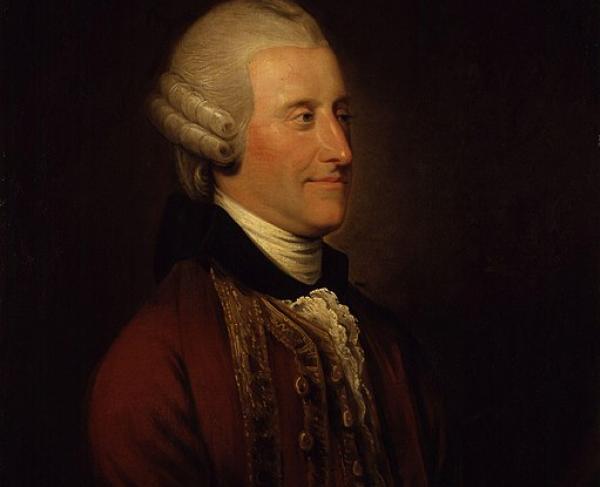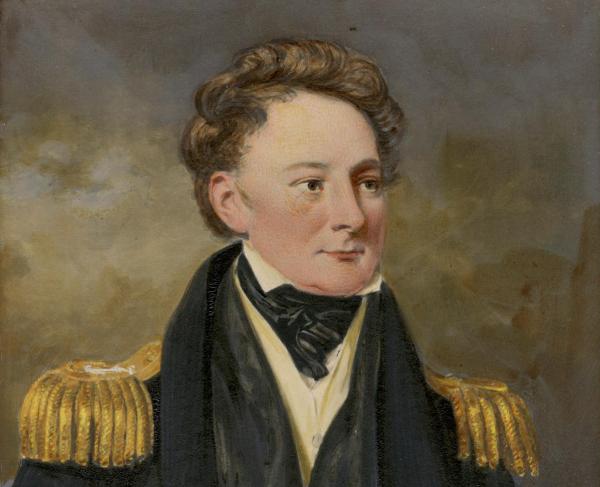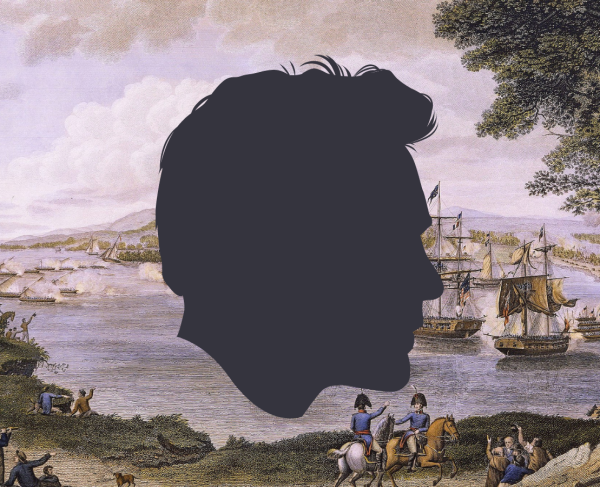John Paul Jones
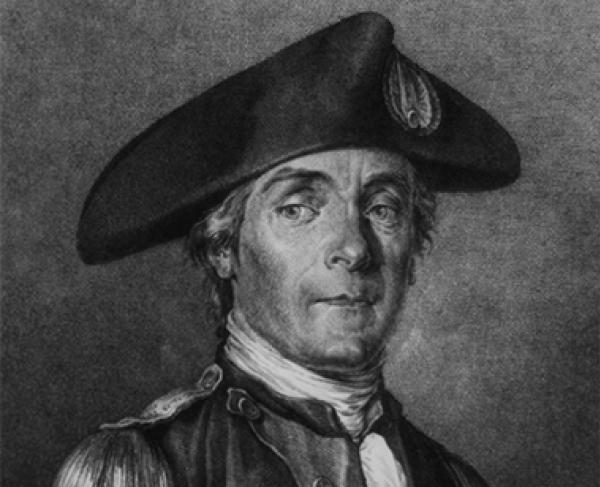
John Paul Jones was born on July 6th, 1747, in Kirkbean, Scotland where his father was the head gardener of the Arbigland Estate. John was born as “John Paul” but will add Jones later in his life. He was born the fourth child of seven and one of only five of such made it to adulthood. John Paul Jones will be remembered in history as a naval hero to some and a pirate to others.
John had an education, being sent to Kirkbean School. However, he spent much of his time off at the nearby port of Carsethorn. Whenever he could he ran down to the port where he would talk to sailors and clamber all over the ships; it was clear that the sea was calling John. At the age of thirteen he signed on and began an apprenticeship for John Younger, a Scottish merchant shipper. His first voyage as a ship’s boy took him to the Americas, sailing to Barbados and then to Virginia where he stayed with his older brother William who had emigrated there and strived as a tailor.
After returning to the Whitehaven, Great Britain, John Paul had found that John Younger’s business was failing, and he was released from his apprenticeship. Now seventeen, John Paul entered the slave trade. Within two years he transferred as first mate to the ship Two Friends of Kingston, Jamaica in 1766. The ship was only fifty feet long and after several voyages to and from Africa, John quit the slave trade in disgust calling it an “abominable trade” and booked passage for Scotland. During the voyage, both the captain and first mate died of fever; John Paul was the only man on the ship qualified to bring the ship, named John, home safely. The owners of the ship were so pleased that they appointed him master and supercargo of the ship.
Now at the age of twenty-one, John Paul had become a captain. He adopted the manner of a young gentleman who was always neatly dressed and had an eye for the ladies but came with a violent temper. While captaining the John he was accused by the ships carpenter of excessive flogging. The carpenter was examined, and his complaint was dismissed. While returning the Scotland, that same carpenter died of Yellow Fever and John Paul was arrested and charged with murder. Evidence and a declaration from the master of the Barcelona Packet was sufficient to acquit John. The story will dog his entire life.
In the years prior to the American Revolution, John Paul took command of the Betsy in the fall of 1772. Trading back and forth between England and the West Indies, he accumulated a considerable sum. The flourishment all came to a halt when in 1773 John killed the ringleader of a mutiny with his sword aboard his ship in a dispute over wages. The man was a local of the West Indies, feeling was against John and to evade trial, he fled to Virginia. Here, he changed his named to John Paul Jones.
While in Virginia, Jones’ sympathies were with the colonists and the rebel cause. When Congress formed the Continental Navy, Jones rushed to Philadelphia to offer his services and was commissioned as first lieutenant in December 1775. At the time the Continental Navy consisted of a handful of ships; Jones was lieutenant of the Alfred and then later captain of the Providence. His exploits took him to the West Indies, where he distinguished himself against the British ship Glasgow. In 1776 he switched commands between Alfred and Providence as he operated in the Atlantic Ocean. He captured eight prizes, sunk and burnt another eight, and towed to port several prizes to end the year.
In June 1777, Jones was appointed to the newly built Ranger. Sailing to the British Isles, he took several prizes before arriving in Brest, France in May 1778 where he was hailed as a hero. Operating out of Brest, Jones led a cruise to the Irish Sea capturing or destroying small vessels. This cruise made Jones a household name in Britain.
Returning to Brest once again, Jones was given command of the Duc de Duras, which he had converted to a warship. He renamed her the Bonhomme Richard in honor of Benjamin Franklin. In August 1779 he set sail for Britain again with a squadron of seven ships, raiding commerce around Scotland and Ireland for the better part of the month.
On September 23rd, Jones engaged a merchant fleet which consisted of the HMS Serapis and Countess of Scarborough. Jones was outgunned by the Serapis but thanks to his brilliant maneuvering, he lashed the Bonhomme Richard on to the enemy ship where a battle ensued for three and a half hours. When the enemy captain asked Jones if he would like to surrender, he promptly replied “I have not yet begun to fight!” Jones and his crew were victorious, but Bonhomme Richard began to sink. Jones transferred his remaining crew to the surrendered Serapis and Scarborough and sailed for the Netherlands.
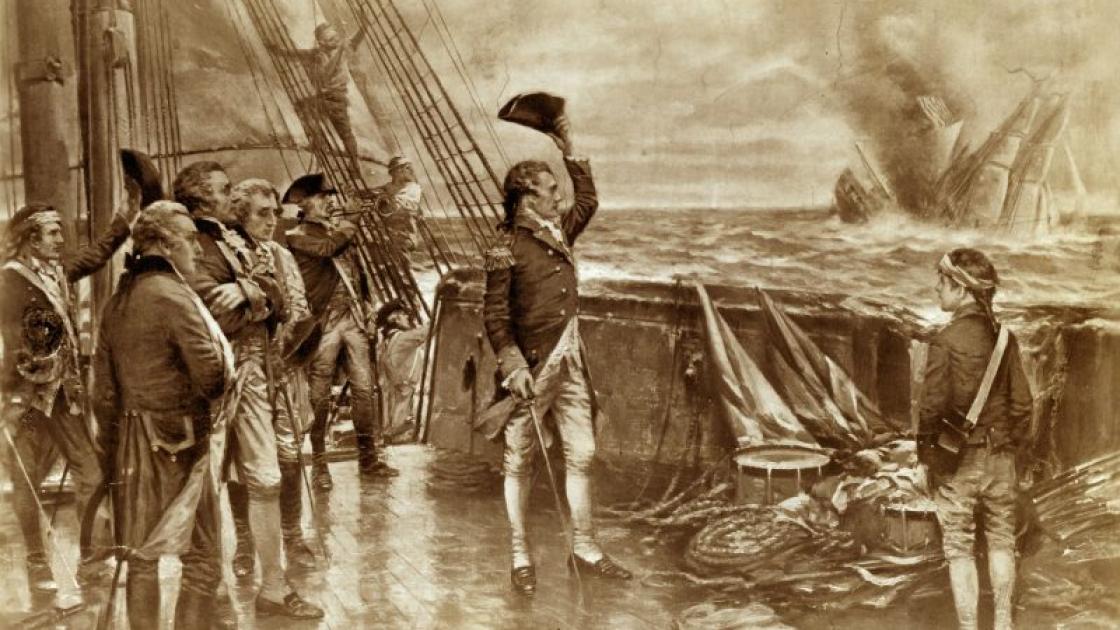
Later he received a gold sword and the Order of Military Merit from Louis XVI. In 1787 Congress passed a vote of thanks for his honor of the American Fleet and they gave him a gold medal. When returned to America in 1781, Jones spends the remaining years of the war advising on the establishment of the navy and the training of naval officers. Jones if often referred to as the Father of the American navy.
After the Americans had won their independence, Jones offered his services to the Russian Empress Catherine II and was granted the rank of rear admiral, serving there for about two years. In May 1790 he returned to Paris where he spent the rest of his life in failing health. He wrote letters to his two estranged sisters in Scotland and to the French Minister of Marine to pay salaries to the men of Bonhomme Richard. On July 18th, 1792, Jones died at the age of 45 in his apartment in Paris.
For near a century, his body laid in an unmarked grave for foreign Protestants. In the late 1800s, with a great American naval expansion encouraged by Teddy Roosevelt, intensive research was made to find his body, which it was in 1905. Jones’ body was brought back on USS Brooklyn, and as the ship sailed into Chesapeake Bay seven battleships met them and fired off salutes. In 1913, his body was finally laid to rest at the chapel crypt of Annapolis Naval Academy, in a magnificent marble sarcophagus modeled after the tomb of Napoleon.
